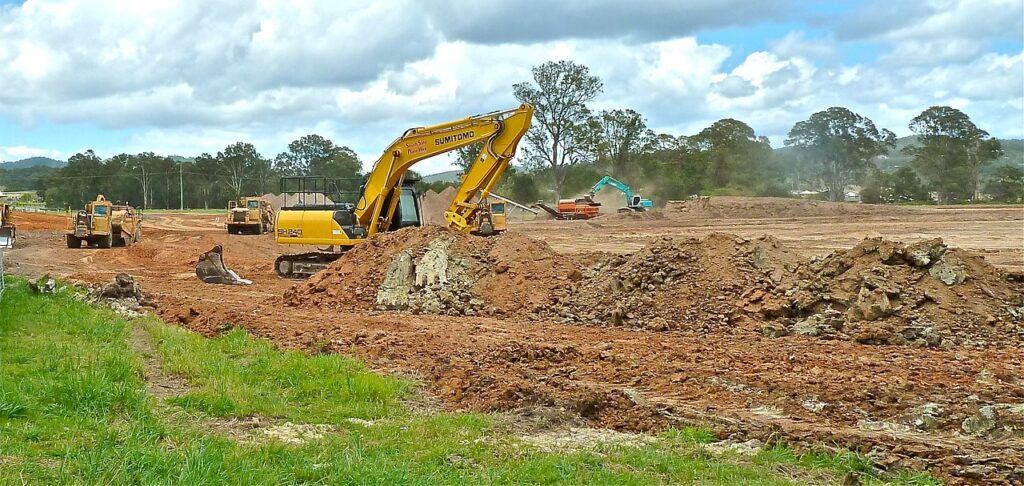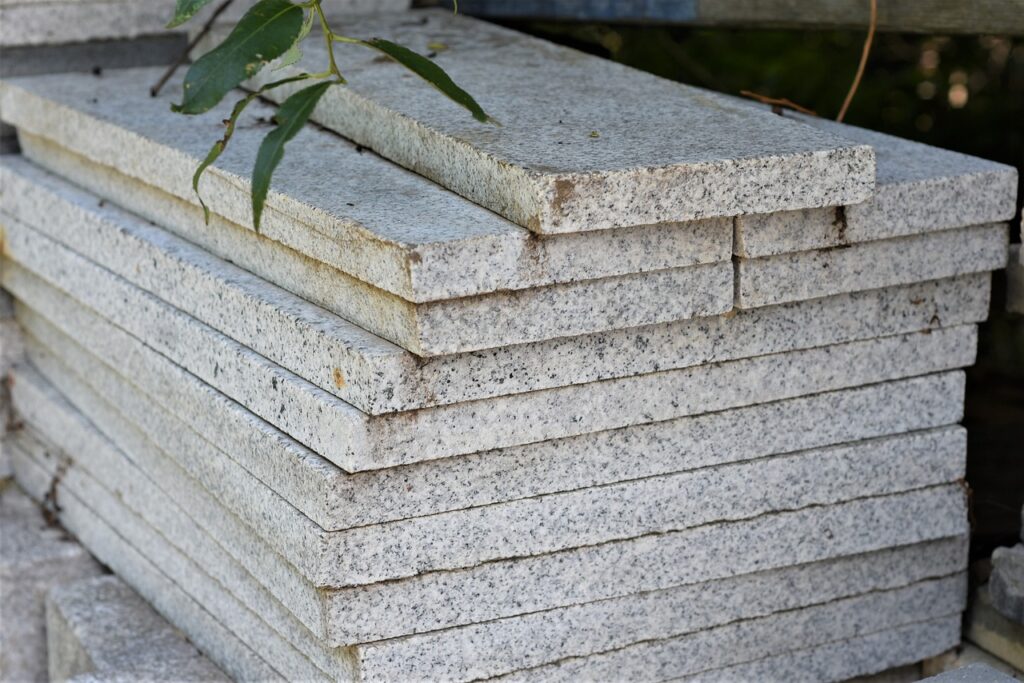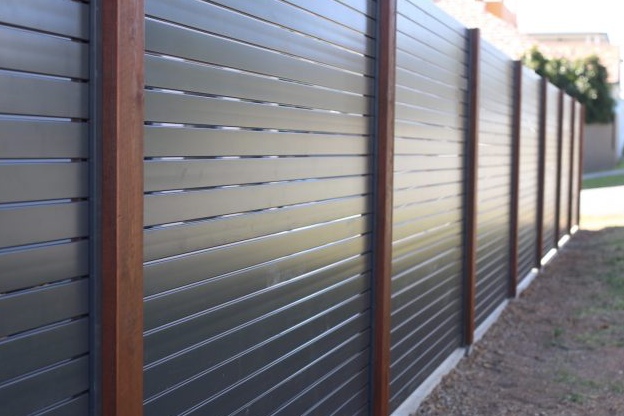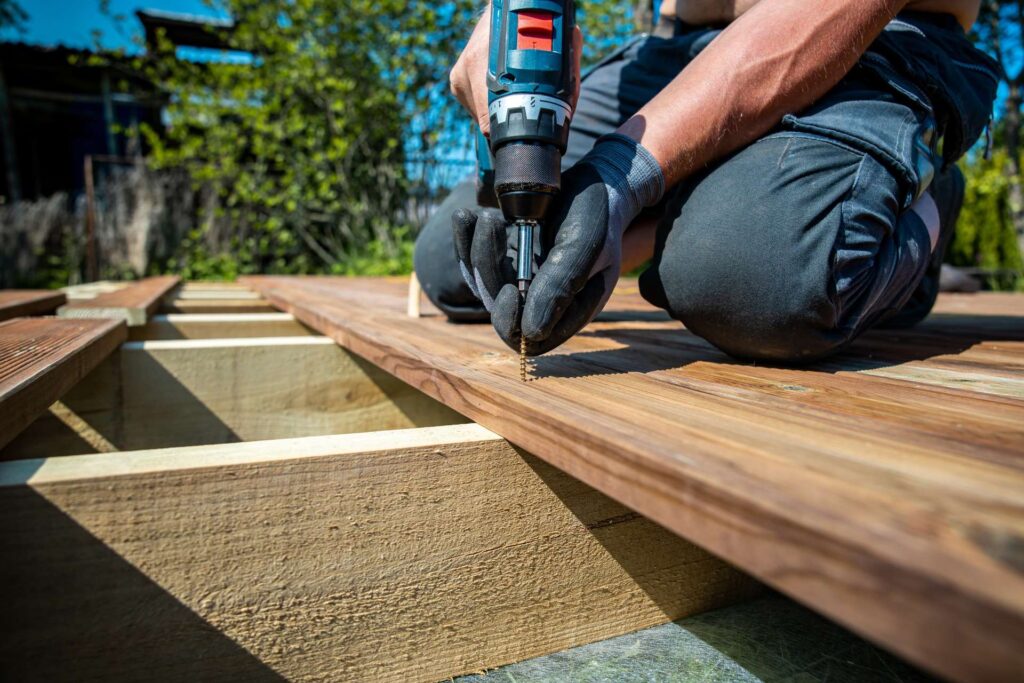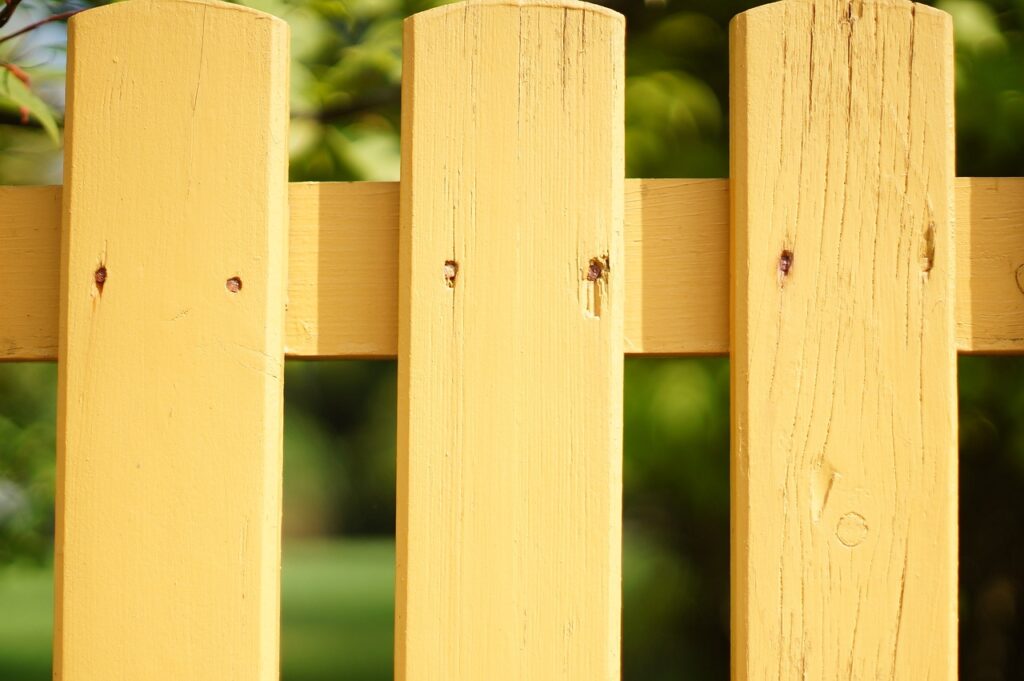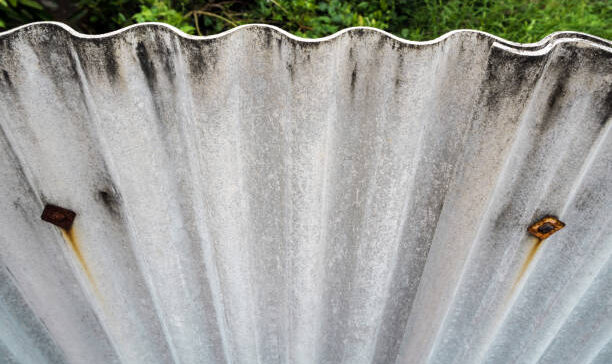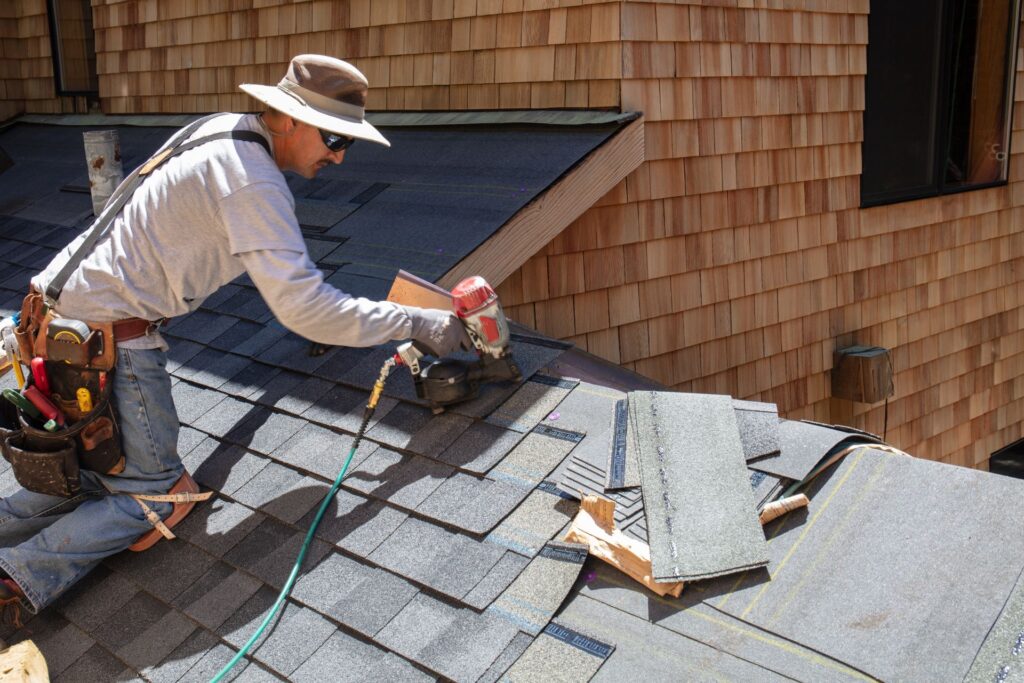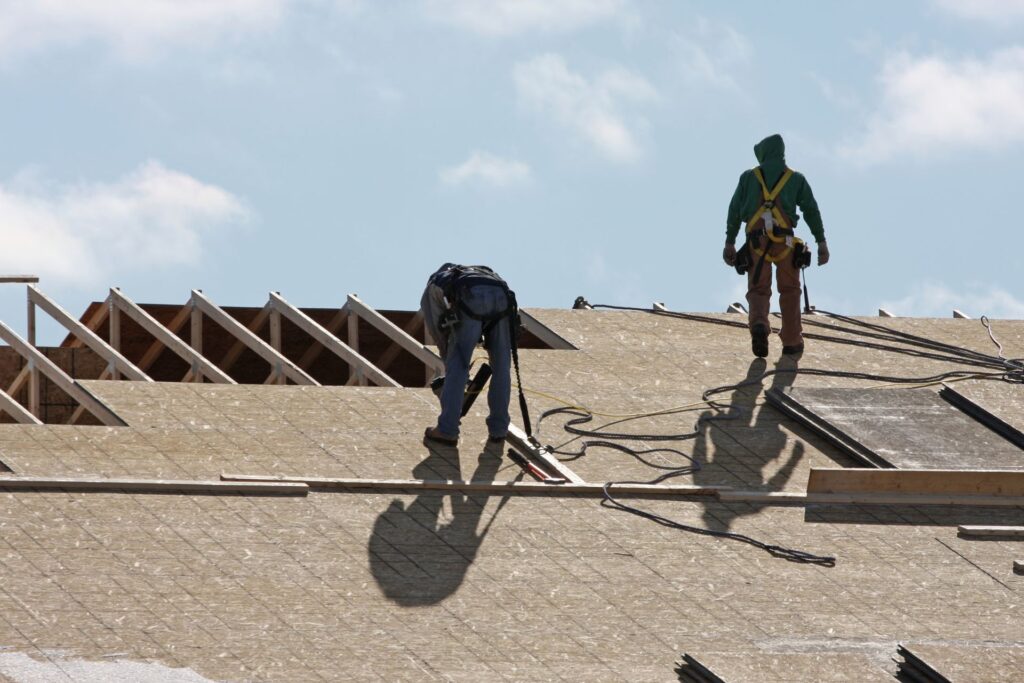Welcome to your ultimate guide on crawl space foundation repair costs in New Zealand! As a homeowner, understanding the potential expenses and factors influencing the cost of these repairs is crucial to maintaining the structural integrity and value of your home. In this comprehensive article, we will delve into what a crawl space foundation is, common issues that can arise, signs indicating the need for repairs, and a detailed breakdown of repair costs. Additionally, we’ll share practical tips for saving money, choosing a reliable contractor, and real-life examples to give you a complete picture. Stay tuned to learn everything you need to know about managing and budgeting for crawl space foundation repairs in NZ.
On average, crawl space foundation repair costs in New Zealand range from $3,000 to $15,000, depending on the severity of the damage, the type of repairs needed, and regional factors. Minor repairs like sealing cracks may cost less, while extensive structural reinforcements or mold remediation can significantly increase expenses.
- What Is A Crawl Space Foundation?
- Common Issues With Crawl Space Foundations
- Signs Your Crawl Space Foundation Needs Repair
- Factors Affecting Crawl Space Foundation Repair Costs
- Typical Costs For Crawl Space Foundation Repairs In NZ
- Cost-Saving Tips For Crawl Space Foundation Repairs
- Choosing A Reliable Contractor
- Case Studies And Real-Life Examples
- FAQs: About Crawl Space Foundation Repair Cost In NZ
- Conclusion
- Find A Professional Drainlaying Company Near You!
What Is A Crawl Space Foundation?
A crawl space foundation is a type of construction method where the home is elevated off the ground by a few feet, creating a shallow, unfinished space underneath the house. This area is often just high enough for someone to crawl through, hence the name “crawl space.” In New Zealand homes, crawl space foundations are quite common, particularly in older properties or in regions where the terrain or climate necessitates this type of structure.
Crawl spaces are typically constructed with concrete or masonry perimeter walls and support piers. The space itself is usually covered with a vapor barrier to prevent moisture from the ground from seeping into the home. This foundation type is distinct from other methods such as slab-on-grade or full basement foundations, offering unique benefits and considerations for homeowners.
Purpose
There are several reasons why some homes in New Zealand have crawl space foundations instead of other types. Here are a few key factors:
1. Moisture Control: In areas prone to heavy rainfall or high humidity, a crawl space foundation can help keep the main structure of the house dry. The elevation prevents water from seeping into the living areas, which is a common issue with slab foundations.
2. Cost-Effective: Building a crawl space is often more economical than constructing a full basement. It provides some of the benefits of a basement, such as easy access to plumbing and electrical systems, without the higher costs associated with deeper excavation and more extensive construction.
3. Ventilation and Airflow: Crawl spaces can help improve ventilation under the house, reducing the risk of mold and mildew. Properly ventilated crawl spaces allow air to circulate, which can be beneficial in damp climates.
4. Pest Control: Elevating the home off the ground can also help in managing pests. It creates a barrier between the ground and the living areas, making it harder for termites and other insects to invade the home.
5. Access to Utilities: One of the significant advantages of a crawl space is the easy access it provides to plumbing, electrical wiring, and HVAC systems. Repairs and maintenance can be performed without the need for major disruptions or costly excavations.
6. Foundation Stability: In areas with unstable soil or where there is a risk of soil movement, a crawl space foundation can provide more stability than a slab foundation. The support piers can be adjusted or reinforced as needed to ensure the home’s structural integrity.
Overall, the choice to use a crawl space foundation in New Zealand homes is influenced by practical considerations related to cost, climate, and maintenance needs. This type of foundation provides a versatile and effective solution for many homeowners, balancing the need for a stable, dry, and accessible base for their houses.

Common Issues With Crawl Space Foundations
Crawl space foundations, while beneficial for certain climates and building types, come with their own set of challenges. Understanding these common issues can help homeowners take proactive measures to protect their property and avoid costly repairs. Here are some of the most prevalent problems associated with crawl space foundations:
Moisture Problems
Moisture is arguably the most significant issue affecting crawl space foundations. When moisture seeps into the crawl space, it creates a host of problems:
- Wood Rot and Decay: Excess moisture can cause wooden beams and floor joists to rot and decay. This not only weakens the structural integrity of the home but also poses safety risks.
- Mold and Mildew: Damp environments are perfect breeding grounds for mold and mildew. These fungi can spread quickly, leading to health issues such as allergies, respiratory problems, and other illnesses for the occupants of the home.
- Increased Humidity: High moisture levels in the crawl space can lead to increased humidity throughout the house. This can make the home feel uncomfortable and can also affect wooden floors and other materials inside the living space.
To prevent moisture problems, it’s crucial to ensure proper ventilation, use vapor barriers, and maintain adequate drainage systems around the foundation.
Structural Damage
Structural damage in crawl space foundations can arise from various factors, often exacerbated by moisture and soil conditions:
- Foundation Settling and Shifting: Over time, the soil beneath a crawl space foundation can settle or shift, causing the foundation to crack or become uneven. This can lead to noticeable issues such as sloping floors, cracked walls, and misaligned doors and windows.
- Sagging Floors: When the support beams and joists in a crawl space weaken due to moisture or pest damage, floors can start to sag. This not only affects the appearance of the home but can also lead to further structural issues if not addressed promptly.
- Cracks in the Foundation Walls: Cracks can develop in the foundation walls due to soil pressure, moisture, and temperature fluctuations. These cracks can allow water to enter the crawl space, compounding moisture-related problems and further weakening the structure.
Regular inspections and maintenance are key to identifying and addressing structural issues before they escalate.
Pest Infestation
Crawl spaces offer an inviting environment for various pests, which can cause significant damage to the foundation and the home’s interior:
- Termites: These wood-destroying insects can cause extensive damage to the wooden structures within a crawl space. Termites can remain undetected for years, silently eating away at the beams and joists until significant damage becomes apparent.
- Rodents: Rats and mice can squeeze into crawl spaces through tiny openings. Once inside, they can chew through insulation, wiring, and wooden structures, leading to structural damage and potential fire hazards.
- Insects and Spiders: Various insects and spiders are attracted to the damp, dark environment of a crawl space. While they may not cause direct structural damage, they can create an unpleasant living environment and pose health risks to the home’s occupants.
Effective pest control measures, including sealing entry points, reducing moisture, and regular inspections, can help prevent infestations and protect the integrity of the crawl space foundation.
By being aware of these common issues, homeowners can take steps to mitigate potential problems and maintain a healthy, structurally sound crawl space foundation. Regular inspections, proper moisture control, and pest management are essential strategies in preserving the foundation’s integrity and ensuring the longevity of the home.
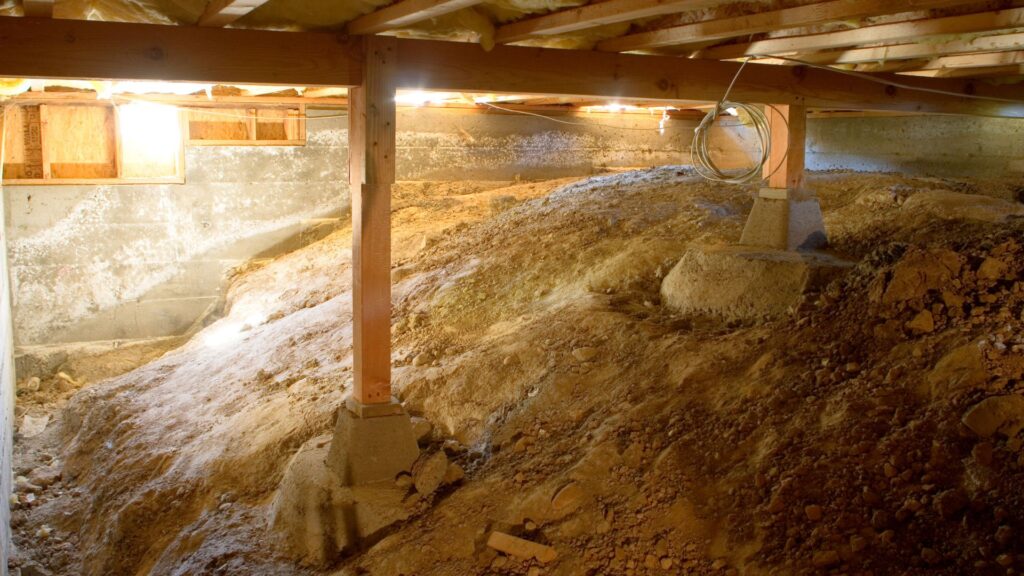
Signs Your Crawl Space Foundation Needs Repair
Visible Cracks
Cracks in the foundation are one of the most apparent signs that your crawl space needs attention. These cracks can vary in size and location, but they generally indicate a shift or settlement in the foundation. Small hairline cracks might seem harmless initially, but over time, they can widen and become more problematic. Large cracks, especially those wider than a quarter of an inch, are usually a sign of significant structural issues. These cracks can allow moisture and pests to enter your crawl space, leading to further damage and potentially costly repairs if not addressed promptly.
Sagging Floors
If you notice that the floors above your crawl space are sagging or uneven, this could be a sign of foundation issues. Sagging floors often occur because the support beams in the crawl space have weakened or shifted. This can happen due to moisture damage, wood rot, or improper installation. As these beams deteriorate, they can no longer hold the weight of the structure above, leading to noticeable dips and uneven areas in your flooring. Not only is this a structural concern, but it can also pose safety risks to those living in the home.
Water Damage
Water damage is a common issue in crawl spaces, especially in areas prone to heavy rain or flooding. Signs of water damage include damp or wet walls, standing water, and a musty smell. Persistent moisture in your crawl space can lead to wood rot, which weakens the structural integrity of your foundation. It can also create an ideal environment for pests and insects, which can further damage the wood and insulation. Addressing water issues promptly is crucial to prevent extensive damage and maintain the stability of your home’s foundation.
Mold and Mildew
Mold and mildew thrive in damp, dark environments like crawl spaces. The presence of mold and mildew is not only a health risk but also a sign of excessive moisture problems. Exposure to mold can cause respiratory issues, allergies, and other health problems, especially for those with weakened immune systems. Additionally, mold can weaken the wooden structures within your crawl space, leading to further structural damage. If you notice a musty smell or see visible mold growth, it’s essential to take immediate action to remove the mold and address the underlying moisture issues.
Regularly inspecting your crawl space and addressing these signs early can prevent minor issues from becoming major problems. If you notice any of these signs, it’s best to consult a professional to assess the situation and recommend the appropriate repairs. Maintaining a healthy crawl space is crucial for the overall stability and safety of your home.

Factors Affecting Crawl Space Foundation Repair Costs
Understanding the factors that affect crawl space foundation repair costs can help homeowners in New Zealand better plan and budget for necessary repairs. Here are the key elements that influence the overall expense:
Severity of Damage
The severity of damage to a crawl space foundation is one of the most significant factors affecting repair costs. Minor issues such as small cracks or slight settling can be relatively inexpensive to fix. However, severe damage, including significant structural issues or widespread water damage, will require more extensive repairs, leading to higher costs. Assessing the extent of the damage through a professional inspection is crucial to determining the necessary repairs and associated expenses.
Type of Repairs Needed
The type of repairs required also plays a critical role in the overall cost. Here’s a breakdown of the different types of repairs and their respective costs:
- Minor Repairs: These include simple fixes like sealing small cracks, applying waterproof coatings, or addressing minor water leaks. The costs for minor repairs can range from $500 to $2,000, depending on the specific issues and materials needed.
- Major Repairs: Major repairs involve more complex tasks such as underpinning, installing new support beams, or replacing significant portions of the foundation. These repairs are more labor-intensive and require specialized materials, which can increase the cost substantially. Major repairs can range from $5,000 to $20,000 or more, depending on the severity and scope of the work.
Materials and Labor
Material and labor costs vary widely in New Zealand, impacting the total expense of crawl space foundation repairs. High-quality materials such as reinforced concrete, steel beams, and waterproofing membranes tend to be more expensive but provide long-term durability. Labor costs can also differ based on the experience and expertise of the contractors. On average, homeowners can expect to pay between $50 to $100 per hour for professional labor, with additional costs for specialized services.
Location
The geographic location of the property significantly influences repair costs. In urban areas like Auckland or Wellington, higher living costs and demand for skilled labor can lead to increased repair expenses. Conversely, in rural areas, costs may be lower due to reduced demand and lower living expenses. Additionally, accessibility to the property and crawl space can affect labor costs, as difficult-to-reach areas may require more time and effort to repair.
Inspection and Permit Fees
Before any repairs can commence, a thorough inspection by a qualified professional is necessary to assess the damage and recommend appropriate solutions. Inspection fees typically range from $200 to $500, depending on the complexity of the inspection. Additionally, obtaining necessary permits from local authorities can incur extra costs. Permit fees vary by region but generally range from $100 to $1,000. Ensuring all permits are in place is essential to comply with local building regulations and avoid potential fines.
Crawl space foundation repair costs in New Zealand are influenced by various factors, including the severity of the damage, type of repairs needed, material and labor costs, location, and additional fees for inspections and permits. Homeowners should consider these elements when planning for repairs to ensure they receive accurate estimates and high-quality services. Engaging with experienced professionals and obtaining multiple quotes can help in making informed decisions and managing repair expenses effectively.
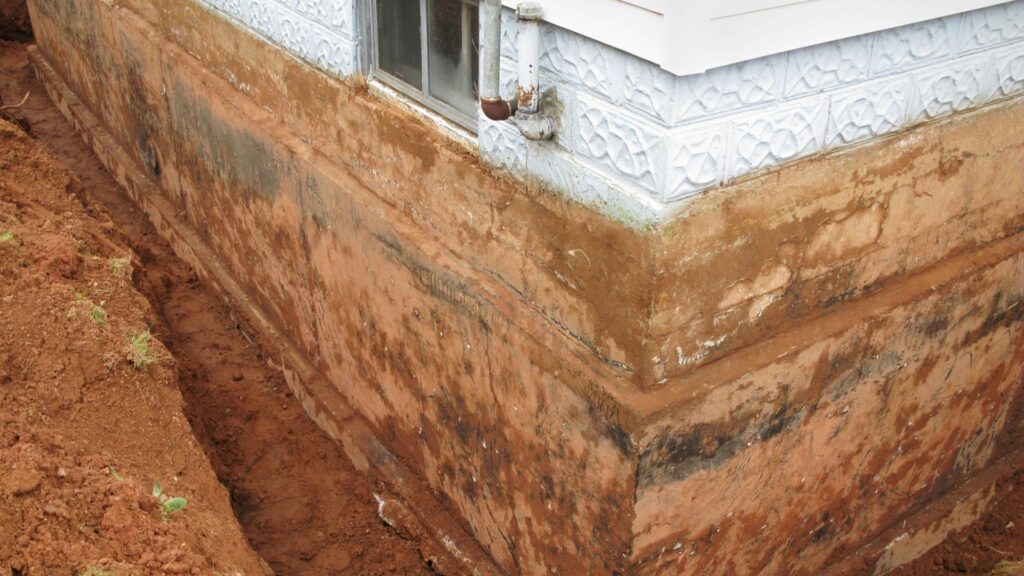
Typical Costs For Crawl Space Foundation Repairs In NZ
Average Cost Range
When it comes to crawl space foundation repairs in New Zealand, the costs can vary significantly based on the extent of the damage and the specific type of repair needed. On average, homeowners can expect to spend anywhere from NZD 5,000 to NZD 20,000 for crawl space foundation repairs. This range can cover a variety of common issues, from minor waterproofing tasks to more extensive structural reinforcements.
Detailed Breakdown
To give a clearer picture of what contributes to these costs, let’s break down the typical expenses associated with crawl space foundation repairs:
Waterproofing
Waterproofing is often a crucial step in repairing crawl spaces, especially in areas prone to moisture and flooding. The cost for waterproofing can range from NZD 2,000 to NZD 10,000, depending on the size of the crawl space and the methods used. This might include the installation of sump pumps, drainage systems, and vapor barriers to keep the area dry and prevent future water damage.
Structural Reinforcement
If the foundation itself is compromised, structural reinforcement will be necessary to ensure the stability of the home. This can be one of the more expensive aspects of crawl space repairs, with costs typically ranging from NZD 5,000 to NZD 15,000. Reinforcement might involve installing steel or carbon fiber supports, underpinning the foundation, or other engineering solutions designed to bolster the structural integrity of the home.
Mold Remediation
Mold is a common issue in damp crawl spaces and addressing it is essential for maintaining a healthy living environment. The cost of mold remediation in crawl spaces can vary widely, from NZD 1,500 to NZD 7,000. This cost includes the removal of existing mold, cleaning affected areas, and implementing measures to prevent future mold growth, such as improving ventilation and addressing any underlying moisture problems.
Each of these components adds to the overall cost of crawl space foundation repairs, but addressing them comprehensively ensures that your home’s foundation is secure and protected against future issues. Investing in these repairs not only enhances the safety and value of your home but also provides peace of mind knowing that potential problems are effectively managed.

Cost-Saving Tips For Crawl Space Foundation Repairs
Maintaining the integrity of your home’s crawl space foundation is essential, but it doesn’t have to break the bank. Here are some practical tips to help you save money on repairs without compromising on quality.
Preventive Maintenance
Preventive maintenance is one of the most effective ways to save on crawl space foundation repair costs. By taking proactive steps, you can prevent minor issues from becoming major, costly problems. Here are a few tips:
- Regular Inspections: Conduct regular inspections of your crawl space to identify potential problems early. Look for signs of moisture, mold, cracks, and pest infestations.
- Moisture Control: Install a vapor barrier to control moisture levels in your crawl space. Excess moisture can lead to mold growth and wood rot, which can compromise the foundation.
- Proper Drainage: Ensure that your home has proper drainage systems, such as gutters and downspouts, to direct water away from the foundation. This helps prevent water accumulation and soil erosion around the crawl space.
- Seal Cracks: Seal any small cracks or gaps in the foundation walls to prevent water intrusion and pest entry. Use appropriate sealants that are designed for foundation repairs.
DIY vs. Professional Repairs
Deciding between DIY repairs and hiring a professional can significantly impact your repair costs. Here’s how to determine the best approach:
- DIY Repairs: For minor issues, such as sealing small cracks or installing a vapor barrier, DIY repairs can be cost-effective. Make sure to follow proper guidelines and use the right materials to avoid further damage.
- Professional Repairs: For major issues, such as structural damage, extensive mold infestation, or significant water intrusion, it’s best to hire a professional. While this might be more expensive upfront, it ensures that the repairs are done correctly and safely, preventing more costly problems in the future.
Getting Multiple Quotes
When it comes to hiring a professional, getting multiple quotes is crucial. Here’s why:
- Competitive Pricing: By comparing quotes from different contractors, you can ensure that you are getting a fair price for the services. It also gives you leverage to negotiate better deals.
- Quality of Service: Multiple quotes allow you to compare the scope of work, materials used, and warranties offered. This helps you choose a contractor who provides the best value for your money.
- Avoiding Scams: It helps you avoid contractors who might overcharge or underdeliver on their promises. Look for licensed and insured contractors with good reviews and references.
Financing Options
Crawl space foundation repairs can be expensive, but there are financing options available to help manage the costs:
- Home Equity Loans: If you have equity in your home, a home equity loan can provide the funds needed for repairs at a lower interest rate than personal loans or credit cards.
- Personal Loans: For those without home equity, personal loans are another option. Shop around for the best interest rates and terms.
- Contractor Financing: Some contractors offer financing plans or payment options. This can make it easier to afford the necessary repairs by spreading the cost over several months or years.
- Government Programs: Check if there are any local or federal programs that offer grants or low-interest loans for home repairs. These programs are often income-based and can significantly reduce your out-of-pocket expenses.
By following these cost-saving tips, you can effectively manage and reduce the expenses associated with crawl space foundation repairs. Taking preventive measures, making informed decisions about DIY vs. professional repairs, getting multiple quotes, and exploring financing options are all key strategies to ensure your home remains stable and safe without overwhelming your budget.

Choosing A Reliable Contractor
Selecting the right contractor for your project is crucial to ensure the success and quality of the work. Whether you’re planning a home renovation, a new build, or a significant repair, choosing a reliable contractor can make all the difference. This section will guide you through the process of finding and vetting reputable contractors, the essential questions to ask, and the red flags to watch out for.
Research and Reviews
Before hiring a contractor, it’s essential to conduct thorough research. Start by asking friends, family, and neighbors for recommendations. Personal experiences can provide valuable insights into a contractor’s work quality and reliability.
Next, explore online reviews and ratings. Websites like Google, Yelp, and specialized home improvement platforms such as Angie’s List and HomeAdvisor offer a wealth of information from previous clients. Pay attention to both the overall rating and individual reviews to get a balanced perspective.
Visit the contractor’s website and social media profiles to see their portfolio and customer testimonials. A professional and updated online presence can indicate a contractor’s commitment to their business and clients.
Questions to Ask
Once you’ve shortlisted a few contractors, it’s time to dig deeper. Asking the right questions can help you gauge their expertise, reliability, and compatibility with your project. Here are some crucial questions to consider:
1. Are you licensed and insured?
Verify that the contractor has the necessary licenses and insurance to operate in your area. This protects you from liability in case of accidents or damage during the project.
2. Can you provide references?
Ask for contact information of past clients and follow up with them to discuss their experience with the contractor.
3. What is your experience with similar projects?
Ensure the contractor has relevant experience and expertise in the type of work you need.
4. Can you provide a detailed written estimate?
A comprehensive estimate helps you understand the project’s scope, costs, and timeline, reducing the chances of unexpected expenses.
5. What is your projected timeline for this project?
Clarify the expected start and completion dates to ensure they align with your schedule.
6. How do you handle changes or unforeseen issues?
Understanding their approach to problem-solving and flexibility can save you from potential headaches during the project.
Red Flags
Even with thorough vetting, it’s essential to be aware of warning signs that may indicate an unreliable or fraudulent contractor. Here are some red flags to watch out for:
1. Lack of License or Insurance
A reputable contractor should readily provide proof of their credentials. If they hesitate or cannot produce these documents, it’s a major red flag.
2. High-Pressure Sales Tactics
Be cautious of contractors who pressure you into making quick decisions or demand upfront payments before any work begins.
3. Unusually Low Estimates
While a low bid might seem attractive, it could indicate that the contractor plans to cut corners or add hidden costs later. Always compare multiple estimates to understand the market rate.
4. Poor Communication
If a contractor is unresponsive, vague, or dismissive during the initial discussions, it’s likely a sign of how they will handle communication throughout the project.
5. No Written Contract
Always insist on a detailed written contract that outlines the project scope, costs, timeline, and payment schedule. A verbal agreement is not sufficient protection for you.
6. Negative Reviews and Complaints
Consistently negative feedback, unresolved complaints, or a lack of reviews altogether should raise concerns about the contractor’s reliability.
By following these guidelines, you can significantly increase your chances of hiring a trustworthy contractor who will deliver quality work and a positive experience. Taking the time to research, ask the right questions, and be aware of red flags will help ensure your project runs smoothly and meets your expectations.
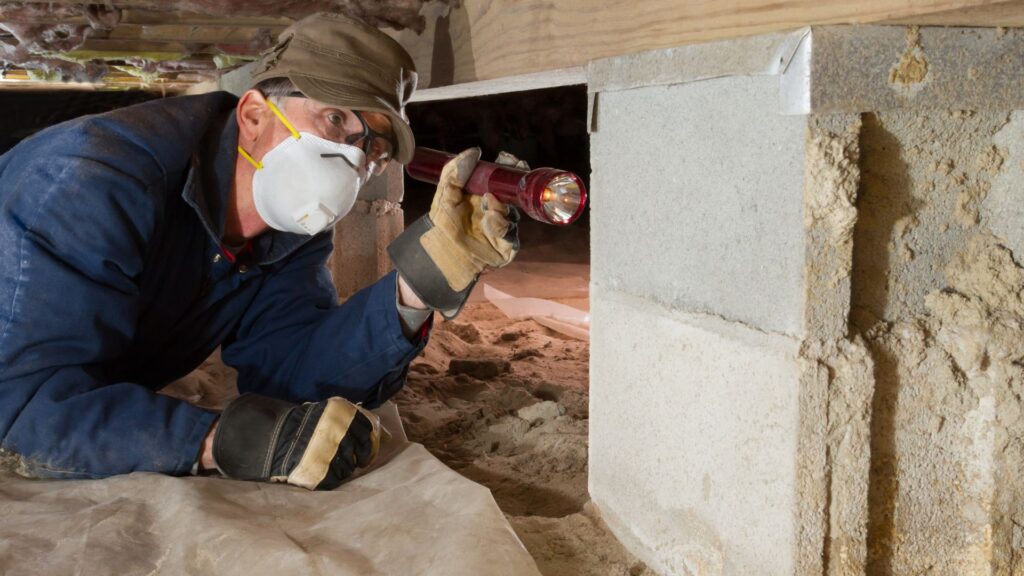
Case Studies And Real-Life Examples
Homeowner Stories
Real-life stories from homeowners can be incredibly valuable in understanding the process and benefits of crawl space foundation repairs. Here are a few compelling accounts from New Zealand homeowners who have undergone this essential home improvement:
1. The Thompsons in Wellington
- Issue: The Thompson family noticed their floors were sagging, and there was a musty smell in their home.
- Solution: Upon inspection, they found that moisture had compromised the integrity of their crawl space foundation. They hired a professional team to carry out the repairs.
- Outcome: The repair process included installing a vapor barrier and reinforcing the foundation with new support beams. Post-repair, the Thompsons reported a significant improvement in air quality and a noticeable difference in the stability of their floors.
2. The Masons in Christchurch
- Issue: The Mason family faced recurring mold problems and high humidity levels in their home.
- Solution: A thorough inspection revealed that their crawl space lacked proper insulation and drainage, leading to excessive moisture buildup.
- Outcome: The repair included sealing the crawl space, improving drainage, and adding insulation. The Masons experienced a drastic reduction in humidity and mold issues, enhancing their overall living environment.
3. The Patel Family in Auckland
- Issue: Cracks in the walls and uneven floors were major concerns for the Patel family.
- Solution: The crawl space foundation was reinforced using steel piers and concrete footings to stabilize the structure.
- Outcome: The foundation repairs restored the structural integrity of their home, and the cracks in the walls ceased to expand. The Patels were pleased with the quick turnaround and the long-term stability provided by the repairs.
Before and After
Visual or descriptive examples can powerfully illustrate the impact of crawl space foundation repairs. Here are some notable transformations:
1. Wellington Property
- Before: The crawl space was cluttered, damp, and had visible mold growth on the wooden beams. The moisture levels were high, leading to a musty odor throughout the house.
- After: The repair team cleared out the clutter, installed a vapor barrier, and replaced the damaged beams. The crawl space was clean, dry, and well-ventilated, eliminating the musty smell and preventing further mold growth.
2. Christchurch Home
- Before: The home’s crawl space had inadequate drainage, resulting in water pooling after heavy rains. This moisture led to wood rot and attracted pests.
- After: A comprehensive drainage system was installed, including French drains and a sump pump. The wood rot was treated, and pest control measures were implemented. The crawl space remained dry even after heavy rains, and the pest problem was resolved.
3. Auckland Residence
- Before: The foundation showed signs of settlement with visible cracks on the exterior walls. The crawl space had poor support, causing the floors to sag.
- After: Steel piers were driven deep into the ground to stabilize the foundation. The cracks were repaired, and additional support beams were added to the crawl space. The floors were leveled, and the structural integrity of the home was significantly improved.
These case studies and real-life examples highlight the transformative effects of crawl space foundation repairs. Homeowners across New Zealand have successfully addressed various issues, from moisture and mold problems to structural instabilities, resulting in healthier living environments and more stable homes. If you’re experiencing similar problems, consider reaching out to a professional for an inspection and see how these repairs can benefit your home.
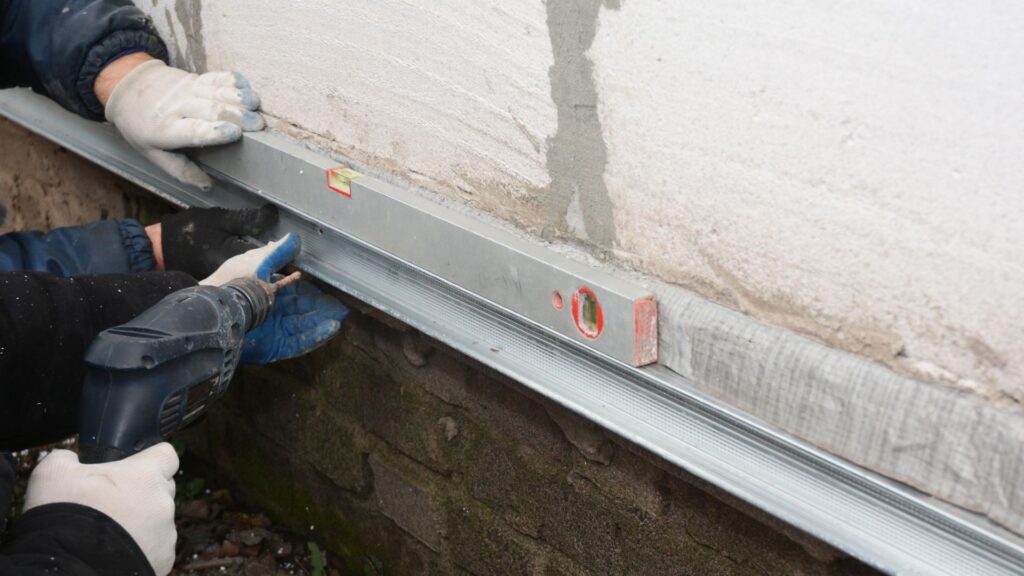
FAQs: About Crawl Space Foundation Repair Cost In NZ
Conclusion
In conclusion, this article has explored the various factors influencing the cost of crawl space foundation repairs in New Zealand, emphasizing the importance of early detection and addressing issues promptly to avoid further damage. We’ve discussed the common problems that can arise in crawl spaces, such as moisture buildup, pest infestations, and structural damage, and highlighted the types of repairs typically needed. Choosing the right contractor is crucial for ensuring quality work and long-term stability. Timely repairs not only protect your home’s structural integrity but also contribute to overall safety and comfort. We encourage you to regularly inspect your crawl space foundation for any signs of trouble and seek professional advice to address potential issues before they escalate. Taking these proactive steps will help maintain the health of your home and prevent costly repairs down the line.
Find A Professional Drainlaying Company Near You!
- Drain Layers Auckland
- Drain Layers Hastings
- Drain Layers Hawkes Bay
- Drain Layers Kapiti Coast
- Drain Layers Lower Hutt
- Drain Layers Napier
- Drain Layers Porirua
- Drain Layers Rotorua
- Drain Layers Tauranga
- Drain Layers Upper Hutt
- Drain Layers Wellington
- Drain Repairs Auckland
- Drain Repairs Wellington
- Drain Unblockers Auckland
- Drain Unblockers East Auckland
- Drain Unblockers North Shore
- Drain Unblockers South Auckland
- Drain Unblockers West Auckland
- Water Leak Detection Auckland
About the Author:
Mike Veail is a recognized digital marketing expert with over 6 years of experience in helping tradespeople and small businesses thrive online. A former quantity surveyor, Mike combines deep industry knowledge with hands-on expertise in SEO and Google Ads. His marketing strategies are tailored to the specific needs of the trades sector, helping businesses increase visibility and generate more leads through proven, ethical methods.
Mike has successfully partnered with numerous companies, establishing a track record of delivering measurable results. His work has been featured across various platforms that showcase his expertise in lead generation and online marketing for the trades sector.
Learn more about Mike's experience and services at https://theleadguy.online or follow him on social media:




